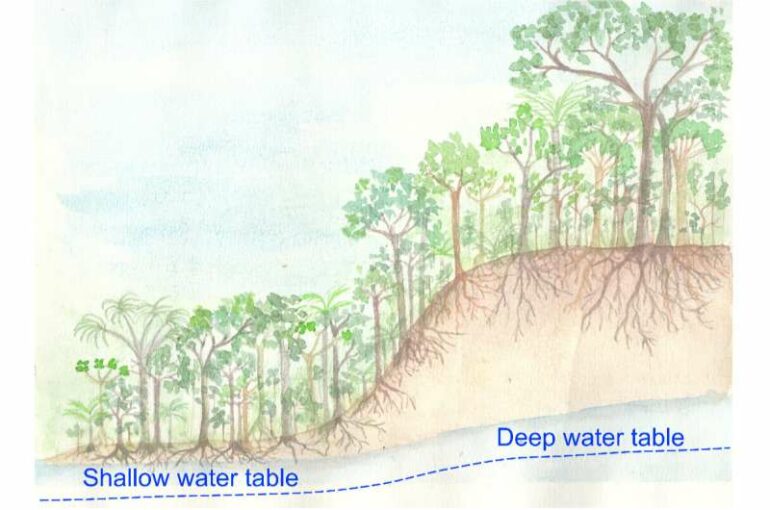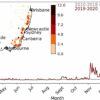New findings published by MSU researchers examine how climate change shapes the future of the world’s largest rainforest and the impacts drought has on the forest growing on various soil water and water table conditions.
These findings published by MSU researchers Scott Stark, assistant professor of forestry, Marielle Smith, postdoctoral research associate of forestry, and colleagues Flávia Costa , professor, National Institute for Amazonian Research, Brazil, and Juliana Schietti, assistant professor, Federal University of Amazonas, examine how climate change shapes the future of the world’s largest rainforest and the impacts drought has on the forest growing on various soil water and water table conditions—a particularly topical subject in light of the recent UN COP26 climate conference.
This research is the first to be published from a $1.12M US National Science Foundation project to investigate the influence of soil water table depth on Amazon forest responses to drought, led by Stark and Smith and colleagues Costa and Schietti.
Amazon forests are globally important for carbon storage, the climate system, and biological diversity. As such, the importance of studying how these ecosystems respond to climate change, particularly drought, is well recognized. However, research frequently neglects a critical component of the hydrological cycle—groundwater.
This oversight is surprising considering the wide range of hydrological conditions that exist across the Amazon basin—from forests growing over deep water tables where soil water can become scarce, to seasonally inundated forests where soil water remains plentiful year-round. Failure to assess Amazon forest drought responses across the full gradient of soil water availability limits scientists’ ability to predict the future of these forests.
The team’s latest research, published in the New Phytologist on Jan. 17, presents a broad review of the importance of water table depth and summarizes previous studies showing the potential for shallow water table forests to act as hydrological ‘refugia’, or oases—showing resilience to droughts while other forests in the landscape are negatively affected.
“A refugia is basically a safe place for an ecosystem that allows it to persist amidst a greater inhospitable landscape,” said Stark.
This led the researchers to hypothesize that sites with different soil water table conditions have highly contrasting responses to drought, and particularly that shallow water table forests may actually benefit from moderate drought.
More information:
Flavia R. C. Costa et al, The other side of tropical forest drought: do shallow water table regions of Amazonia act as large‐scale hydrological refugia from drought?, New Phytologist (2022). DOI: 10.1111/nph.17914
Provided by
Michigan State University
Citation:
The ‘other side’ of Amazon forest drought (2022, January 19)



